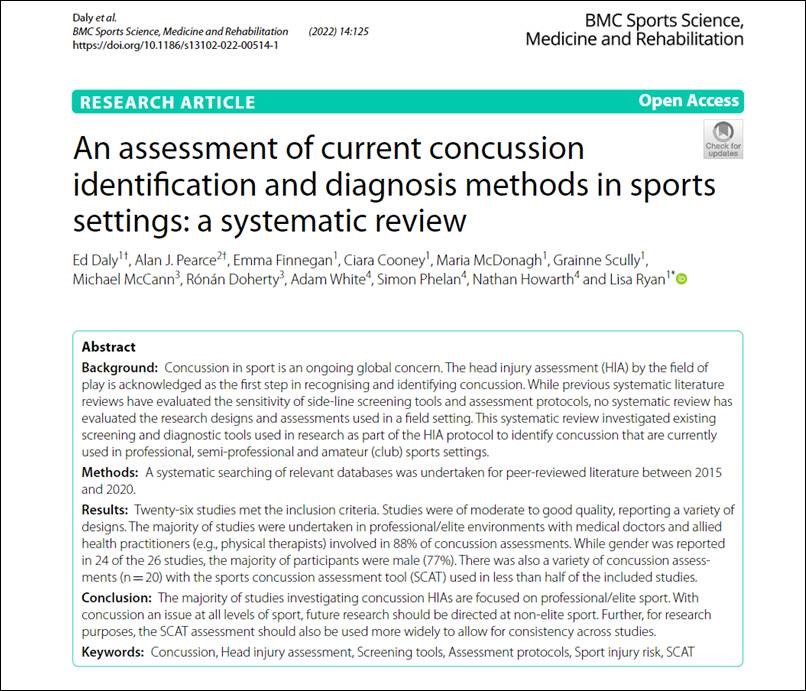O1. A SYSTEMATIC LITERATURE REVIEW
Abstract
Background
Concussion in sport is an ongoing global concern. The head injury assessment (HIA) by the field of play is acknowledged as the first step in recognising and identifying concussion. While previous systematic literature reviews have evaluated the sensitivity of side-line screening tools and assessment protocols, no systematic review has evaluated the research designs and assessments used in a field setting. This systematic review investigated existing screening and diagnostic tools used in research as part of the HIA protocol to identify concussion that are currently used in professional, semi-professional and amateur (club) sports settings.
Methods
A systematic searching of relevant databases was undertaken for peer-reviewed literature between 2015 and 2020.
Results
Twenty-six studies met the inclusion criteria. Studies were of moderate to good quality, reporting a variety of designs. The majority of studies were undertaken in professional/elite environments with medical doctors and allied health practitioners (e.g., physical therapists) involved in 88% of concussion assessments. While gender was reported in 24 of the 26 studies, the majority of participants were male (77%). There was also a variety of concussion assessments (n = 20) with the sports concussion assessment tool (SCAT) used in less than half of the included studies.
Conclusion
The majority of studies investigating concussion HIAs are focused on professional/elite sport. With concussion an issue at all levels of sport, future research should be directed at non-elite sport. Further, for research purposes, the SCAT assessment should also be used more widely to allow for consistency across studies.
Key points
- Head injury assessments are vital as part of the diagnostic pathway for suspected concussion at all levels of sport.
- This systematic review found that in studies between 2015 and 2020, the majority were focused on elite sports and male participants.
- Studies also utilized a disparate array of assessments making comparison difficult.
- Future studies should aim to focus on amateur (club) sports, include more female participants, and as a minimum include the sports concussion assessment tool (SCAT), along with other assessments to allow for consistency across studies.


